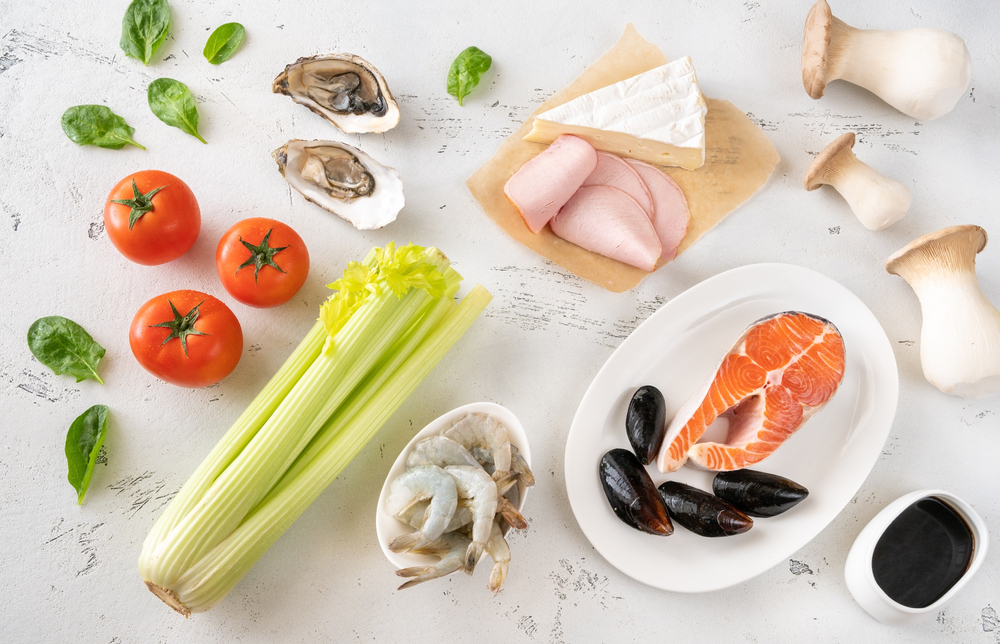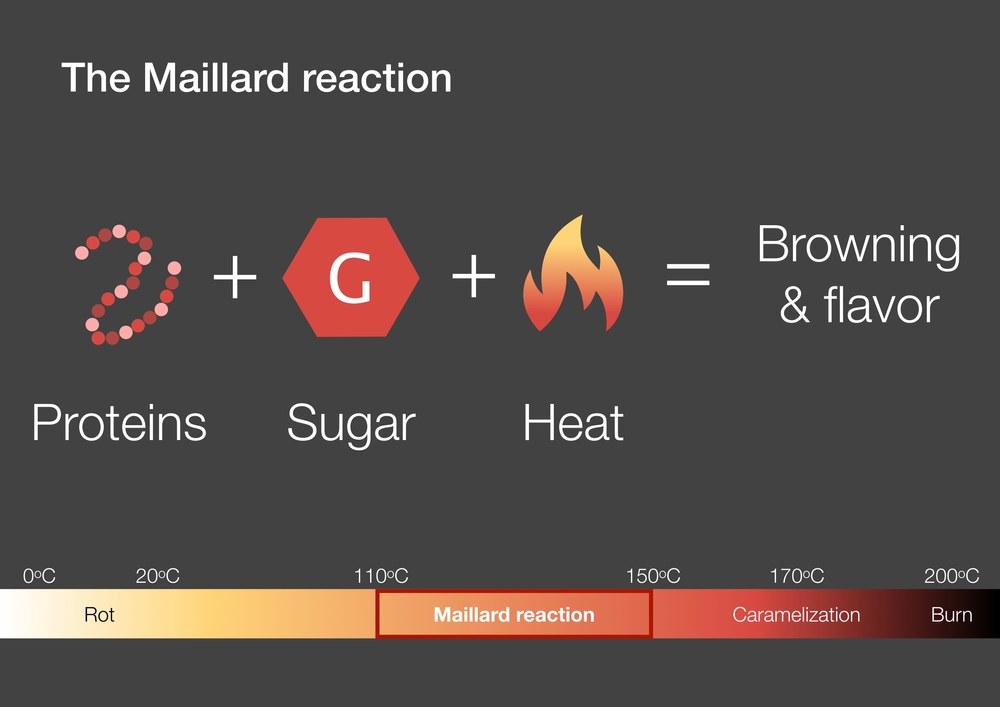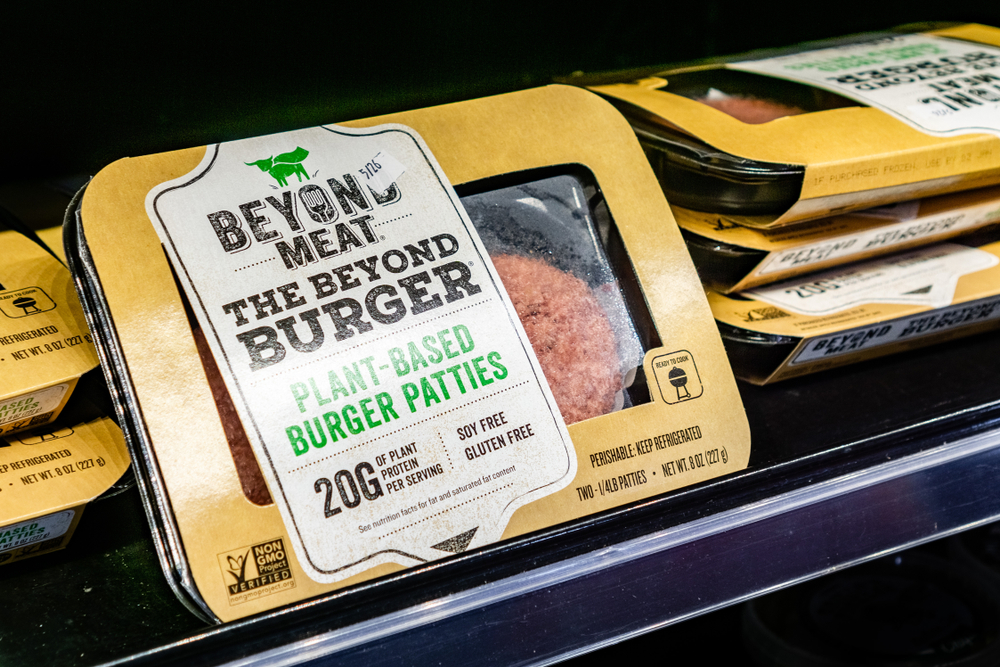The meaty taste is the product of the chemical breakdown of the molecules that make up meat. The breakdown of proteins, sugars and fats due to Maillard reactions results in the aroma and taste of meat.
Freshly baked bread holding a juicy grilled burger dripping with toppings and sauce lies on your plate. You take a bite and your mouth is coated with the undeniable flavor of the meat, which can only be described as… meaty. There is simply nothing else like it.
To understand why meat tastes like meat, we need to look at the chemistry of how it’s cooked.
Unraveling The Taste Of Meat: Umami
Meat is the powerhouse of umami flavor. The savory flavor lies in the unique blend of protein, sugar and fat that is transformed into highly palatable flavors by cooking meat at high temperatures.
Usually, meat is aged for a few hours, during which proteins break down and release amino acids, the building blocks that make up the proteins. Of these amino acids and other molecules that are released, glutamate, inosinate and guanylate give meat its umami savoriness.
These molecules aren’t only found in meat. Glutamate is found in soy sauce, sun-dried tomatoes, monosodium glutamate (MSG; often added to food to give a savory kick), and Parmesan cheese. With its mix of umami taste and sugar, tomato ketchup is the perfect dipping sauce.
Combinations of different foods with ingredients of umami lead to so-called umami bombs—a blast of that meaty taste. Tasting umami activates the secretion of saliva and digestive juices, facilitating the easier digestion of food.

Also Read: What Is MSG (Monosodium Glutamate) And Why Is It Used In Chinese Food?
How Cooking Meat Releases Its Meaty Flavors
Amino acids aren’t the whole answer; if that was the case, raw meat would taste just as meaty as a grilled steak. Cooking the meat further causes the molecules in meat to break down and the heat chemically alters many of these molecules.

Steak, toast, caramel, and bread gain a distinct aroma and flavor when they are cooked by a process of non-enzymatic browning at temperatures between 140ᵒC and 170ᵒC. Enzymatic browning is when enzymes chemically alter the food, which is what happens when fruits ripen.
Non-enzymatic browning comes in 2 types: Caramelization and the Maillard reaction.
Caramelization is a reaction that involves the dehydration (removing water), decomposition (break down) and modification of sugars or carbohydrates when heated to high temperatures to form new compounds with a distinct brown color, flavor and aroma. The brown char on grilled meat is due to caramelization, and it gives the meat a slightly nutty flavor.
A Maillard reaction is a chemical reaction between proteins and sugars that are transformed by heat to create distinct flavors, aromas, and a brown color that makes food enticing.
The basis of a Maillard reaction is heat, sugar and amino acids to produce a complex plethora of taste, color, flavor and aroma.
The reaction happens between reducing sugars and amino acids at temperatures of 110ᵒC to 165ᵒC. The cascade reaction gives several complex intermediate compounds that culminate in a distinct flavor, aroma and taste. A Maillard reaction is also affected by pH and temperature.
Also Read: Why Does Bread Turn So Crispy And Tasty When Toasted?
Which Products Of Cooking Meat Give It That Distinct Taste?
There are literally hundreds of volatile compounds formed during such browning reactions. The products that form depend on the sugar, amino acids, temperature and pH.
Sugars interact with sulphur-containing amino acids, such as cysteine and methionine, to form volatile compounds with meaty flavor notes. These will then react with sulphur-free amino acids to form nitrogen compounds, such as pyrazines. Lysine gives that dark browning effect to the Maillard reaction.
What Do Maillard Reactions Mean To A Consumer?
The Maillard reaction combines these two signals into nutritious and palatable food with roasted or browned flavors. This gives a complex manifestation of flavor and aroma molecules with a darker color, due to edible pigments called melanoidins.

The listed compounds interact among themselves to produce the aromatically flavored brown residue called melanoidins.
Understanding Melanoidins
The end product of a Maillard reaction is the high molecular weight, nitrogenous, brown-colored melanoidins. The different types of melanoidins formed depend on the sugars, 20 different amino acids, temperature, time and pH of the Maillard reaction.
They not only make meat taste like meat, but also contribute to the strong whiff of coffee. The taste of coffee comes from a dry weight of 25% melanoidin! In beer, melanoidins are formed during malting, and the brewing of malt controls the flavor, color, and viscosity of beer.
They possess a broad range of biological qualities, such as antioxidant, antimicrobial, anti-inflammatory, antihypertensive, and prebiotic properties.
However, not all products of Maillard reactions are beneficial. Upon prolonged heating or roasting at a high temperature, the byproduct of a Maillard reaction is acrylamide, which is a carcinogen and a neurotoxin.
Also Read: Why Does Sugar Turn Brown When Melted?
Can We Make Vegan Meat Taste Like The Real Thing?
The climate crisis has made it clear that eating less meat is good for the environment. The vegan movement makes ethical and moral arguments against eating meat. This has led food researchers to develop alternatives that taste like meat, but don’t contain any animal products.
Plant-based meat alternatives on the market use the chemical compounds of Maillard reactions to generate the taste of meat in plant-based options.
Proteins from soy, wheat, pea and fava beans, starch, thickeners, stabilizers and emulsifiers can all make plant-based meat taste very much like authentic meat.
Millions of dollars have been invested to research finer and tastier meat-flavored plant products. Some of the forerunners in this arena are Beyond Meat, Kellogg, and Maple Leaf Foods.

Also Read: ‘Vegetarian’ Meat: What Is Plant-Based Meat?
Conclusions
The Maillard reaction in food is important not just for its taste, but for two important signals: nutritious signals and harmless signals. The nutrition signal tells us that our food is complete with protein and sugar, while the harmless signal tells us that the food won’t kill us.
How well do you understand the article above!

References (click to expand)
- Bellisle, F. (1999, January). Glutamate and the UMAMI taste: sensory, metabolic, nutritional and behavioural considerations. A review of the literature published in the last 10 years. Neuroscience & Biobehavioral Reviews. Elsevier BV.
- Fruits Gone Bad? Discover Enzymatic Browning. Scientific American
- Lund, M. N., & Ray, C. A. (2017, May 30). Control of Maillard Reactions in Foods: Strategies and Chemical Mechanisms. Journal of Agricultural and Food Chemistry. American Chemical Society (ACS).
- He, J., Evans, N. M., Liu, H., & Shao, S. (2020, August 13). A review of research on plant‐based meat alternatives: Driving forces, history, manufacturing, and consumer attitudes. Comprehensive Reviews in Food Science and Food Safety. Wiley.
